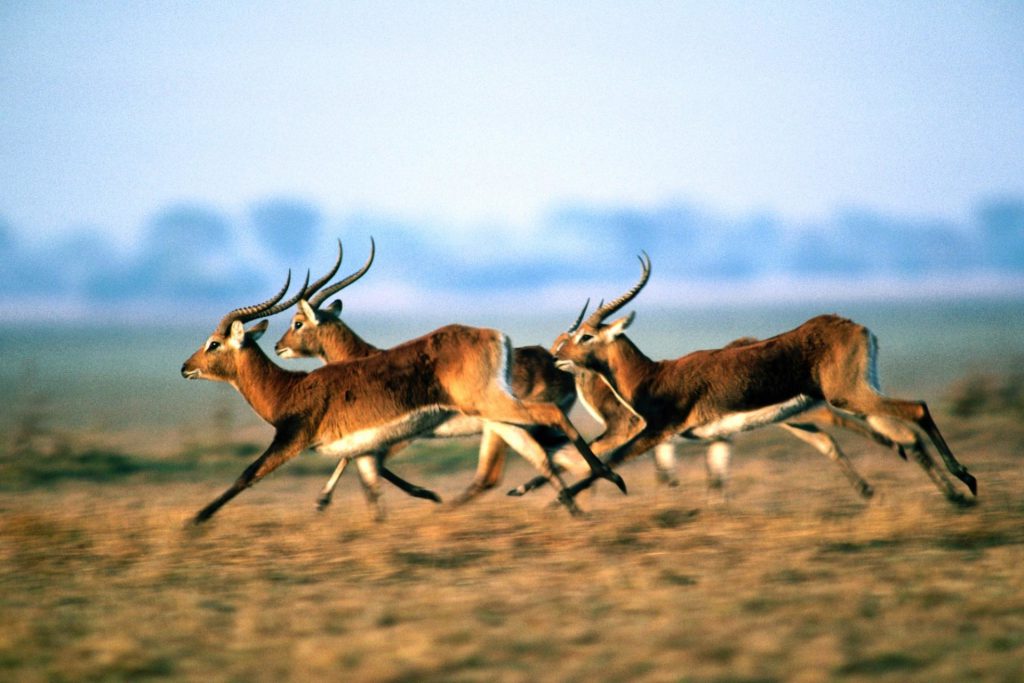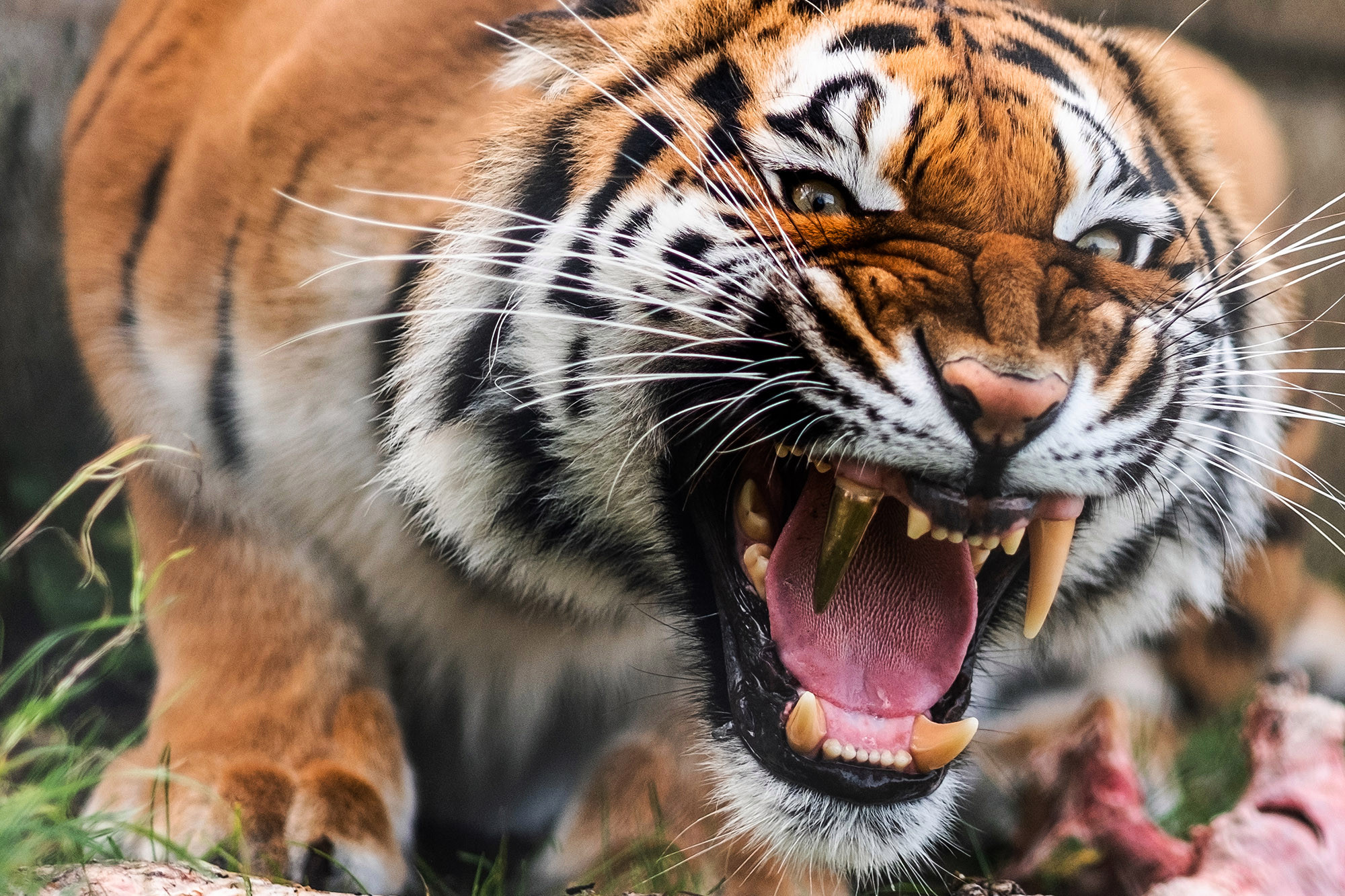Antelopes is the common name of the mammals entering the family Antelope subspecies. From the other members of the cuckoo family such as sheep, cattle and goats, they are distinguished by their fine, shiny and soft feathered postings and elegant structures.
Its distribution is limited to the Old World. The American antelope, who lives in Central and North America, is not from this subfamily and is separated from the real antelope by the renewal of its horns every year. Upward and backward curving horns of the antelopes are usually found in both females and males. The size of the species is very different. For example, while the cow antelope is in a cattle size, the smallest antelope is about 30 cm long. This animal is also the smallest of ruminant mammals. Antelopes run very fast, often living in flocks. However, there are also species living alone, such as striped antelopes. Some species can be domesticated. Antelopes are valuable game animals. Therefore, they hunt in many parts of the world.

Antelopes (Lat. Antilopiane), the subculture of the family of the Cuckoo family of twins, most of the species live in forests, grassy steppes, groves, mountains and river banks in Africa. Some species are also found in Asia. Most live in large flocks. Some species have been extinct, while others have declined, whereas those who live in forests have survived. This sub-family, land-antelope, marsupial-antelope, bull-striped antelope, steppe antelope, four horned antelope, dwarf antelope, gazelle, Iran gazelle, Indian gazelle, cow antelope, addax, kaama, kudu, gnu, orongo enters.
The little royal antelope has the privilege of being the smallest African mandate and the smallest living bull. It has the title of the smallest hoof with the mouse moose. Adults, 50 cm long, 25 cm high and 2.5 kilograms in weight. The skin layers are soft and elegant. General coloration, light brown in the lower part of the light brown, cinnamon or light brown tones. The lower parts are white in color, including the inner part of the jaw, throat and hind legs. The tails are thin and small. The skin surface is mostly white except for a thin strip of color. The tail ends in a completely white tone. Royal antelope is thin, relatively long-legged. This structure provides an aerodynamic shape and allows for a tremendous thrust when the rear legs are needed. On the front surface of each leg, there is a white spot just above the hooves.
The antelope is a horn of horned animals, such as the cattle reminiscent of deer. These animals swallow their food without chewing too much, and then bring their food to their mouths and chew it thoroughly. So they bring the cud. Antelopes living in Africa and Asia, in the forests and savannah in groups of antelopes. Antelope horns of antelope called up to 1.5 meters of antelope horn. The horn of the bull antelope exceeds 1.5 meters, while the king’s antelope finds only 25 cm.
A young antelope observed by the researchers begins to reproduce at the age of four months and enters a natural feeding period for six months. Sexual maturity is achieved after one year. Royal antelopes have a short life span. Antelopes living in the zoo caught in the nature of the examination of the maximum age of 6 years in the natural environment, the zoo have proven to be 8 months.
The horns of the deer fall from the roots every year, while the antelopes do not change as the cattle and sheep. The antelopes are timid and docile, alerting each other in the event of a danger and moving them away from danger. The antelope species are known for their agility and speed. Another kind of antelope impala can jump 2 meters and jump 8 meters away.

 Free Chrome New Tab Extensions Chrome New Tab serves free extensions for the Google Chrome web browser. Customize your browser's new tab page and display different wallpapers each run.
Free Chrome New Tab Extensions Chrome New Tab serves free extensions for the Google Chrome web browser. Customize your browser's new tab page and display different wallpapers each run.



